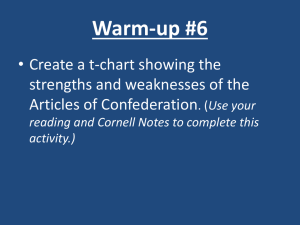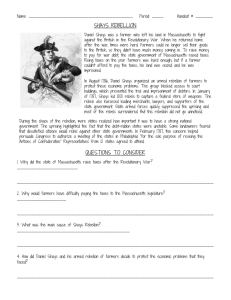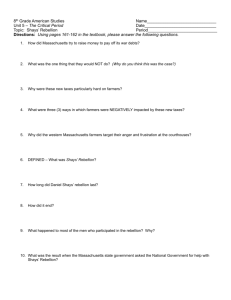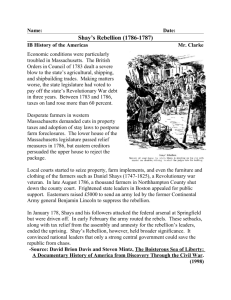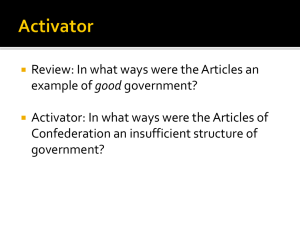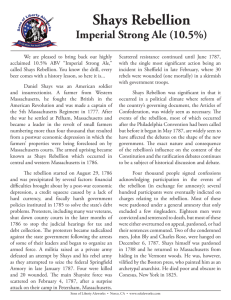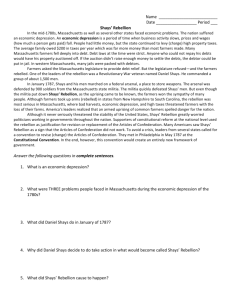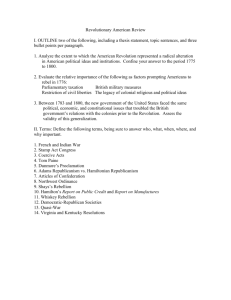Shay's Rebellion
advertisement
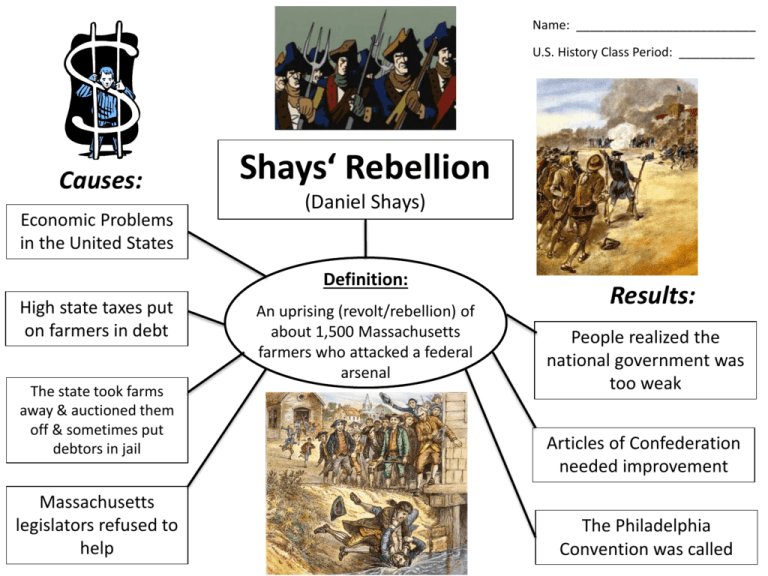
Name: __________________________ U.S. History Class Period: ___________ Causes: Economic Problems in the United States Shays‘ Rebellion (Daniel Shays) Definition: High state taxes put on farmers in debt The state took farms away & auctioned them off & sometimes put debtors in jail Massachusetts legislators refused to help An uprising (revolt/rebellion) of about 1,500 Massachusetts farmers who attacked a federal arsenal Results: People realized the national government was too weak Articles of Confederation needed improvement The Philadelphia Convention was called Shays’ Rebellion Shays' Rebellion is the name given to a series of protests in 1786 and 1787 by American farmers against state and local enforcement of tax collections and judgments for debt. Although farmers took up arms in states from New Hampshire to South Carolina, the rebellion was most serious in Massachusetts, where bad harvests, economic depression, and high taxes threatened farmers with the loss of their farms. The rebellion took its name from its symbolic leader, Daniel Shays of Massachusetts, a former captain in the Continental army. The uprising in Massachusetts began in the summer of 1786. The rebels tried to capture the federal arsenal at Springfield and harassed leading merchants, lawyers, and supporters of the state government. The state militia, commanded by Gen. Benjamin Lincoln, crushed the rebels in several engagements in the winter of 1787. Shays and the other principal figures of the rebellion fled first to Rhode Island and then to Vermont. Although it never seriously threatened the stability of the United States, Shays' Rebellion greatly alarmed politicians throughout the nation. Proponents of constitutional reform at the national level cited the rebellion as justification for revision or replacement of the Articles of Confederation, and Shays' Rebellion figured prominently in the debates over the framing and ratification of the Constitution.
